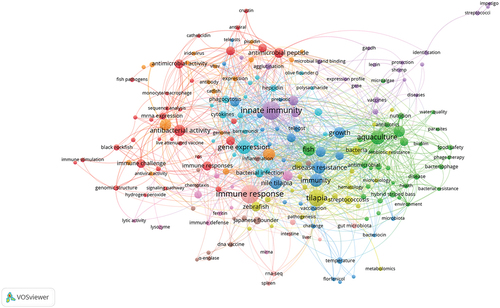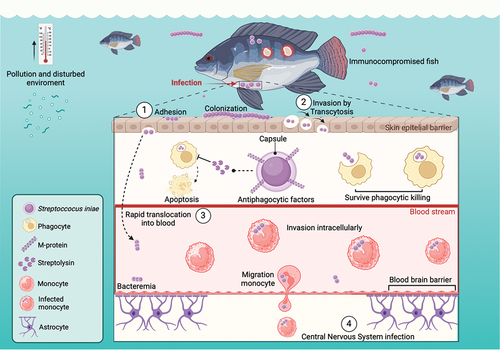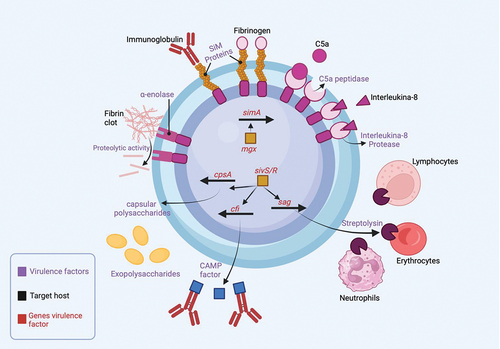Figures & data
Figure 1. Bibliometric co-occurrence analysis of research trends related to Streptococcus iniae cluster map.

Figure 2. Graphic representation of Streptococcus iniae, pathogenesis process in fish. When a pathogenic microorganism gets into a susceptible host, stress factors interact and infection occurs: (1) recognition and adhesion; (2) invasion through transcytosis; (3) evasion and translocation; (4) the pathogen has successfully invaded the host at this stage and proliferates (adapted from Gnanagobal & Santander, 2022). Image created using Biorender.

Figure 3. Schematic representation of the bacterium Streptococcus iniae and the presence of its virulence factors. The image depicts regulatory genes involved in the expression of virulence factors within the cell, as well as the extracellular virulence factors. At the centre, the expression mgx regulates the production of the SiM protein (simA) which binds to immunoglobulin and fibrinogen. Peptidase C5a and interleukin-8 protease alter phagocyte signalling by degrading chemokines. The sivS/R system regulates the production of streptolysin S cytotoxin production. Streptolysin S lyses lymphocytes, erythrocytes, and neutrophils; sivS/R also regulates the CAMP factor gene, cfi, which binds to immunoglobulin via the Fc region. Capsular polysaccharide synthesis (cpsA; CPS) is controlled by sivS/R. The excess production of exopolysaccharide contributes to highly viscous growth. α-enolase degrades fibrin clots and promotes their dissemination (adapted from Baiano & Barnes, 2019). Image created using Biorender.

